Examples of Foliated Metamorphic Rocks
The three metamorphic rocks listed below all form from a sedimentary rock called shale. Shale is made from mud and clay in places like seafloors and swamps. When shale is metamorphosed to different
grades it forms different types of foliated metamorphic rocks.
| Rock |
Picture
(click for larger image) |
Features |
Metamorphic Grade |
Other information |
| Slate |

(Courtesy NPS) |
It looks like shale because it is dark in color and will break into thin flat layers like shale often does. Unlike shale, slate makes a ringing sound when you hit two pieces together. |
Low grade |
Used for walkways and patios. |
| Schist |
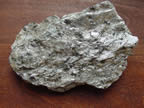
(Courtesy NPS) |
There are several different types of schist such as mica schist, garnet schist, and chlorite schist depending on which minerals are abundant in the rock. However, all schist contains mica and often has rather large crystals of it. |
Intermediate grade |
Can you find the garnets in this picture of
garnet schist? |
| Gneiss (pronounced "nice") |
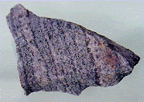
(Courtesy USGS) |
This striped rock often looks a bit like fudge swirl ice cream. The light colored layers are usually quartz and feldspar and the dark layers (the fudge!) are mostly mica. |
High grade |
The gneiss is nice in the Rocky Mountains!
Check out these pictures of gneiss near Lake Isabelle! |
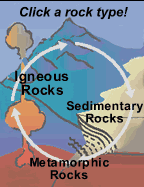
Last modified August 11, 2003 by Lisa Gardiner.
You might also be interested in:
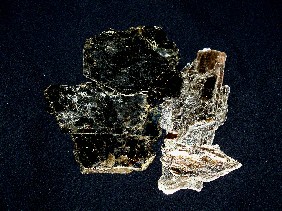
Mica minerals make some rocks sparkle! They are often found in igneous rocks such as granite and metamorphic rocks such as schist. They sparkle because light is reflected on their flat surfaces, which
...more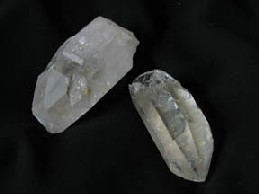
Quartz is one of the most common mineral in Earth’s crust! Silica (Si) and Oxygen (O) are the only elements within pure quartz. If a cooling magma has silica leftover after feldspars form, quartz is likely
...more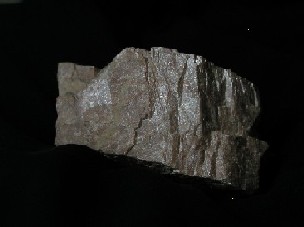
Feldspar is the most common mineral in the Earth’s crust, so you are very likely to find it in the rocks you collect! It is found it all of the three rock types, but is most common in intrusive igneous
...more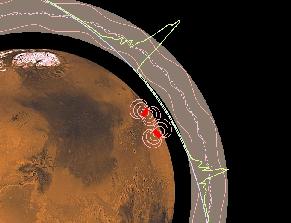
These are some of the initial findings of Mars Global Surveyor. There definitely is a magnetosphere near Mars. suggests scientists must rethink theories about the evolution of Mars. Geologic features at
...more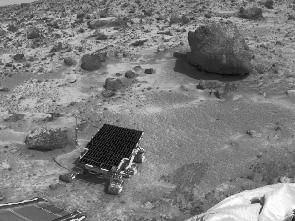
These are the findings of Mars Pathfinder. Rounded Pebbles, Cobbles and possible Conglomerates were found - a result from analysis of the landing site, the rocks, and the soils. showed that there were
...more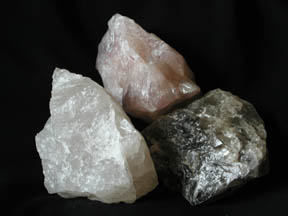
Spotting minerals is fun! There are many different types of minerals, each with a different name and a special set of characteristics. So, if you find a mineral that you do not recognize, you can use
...more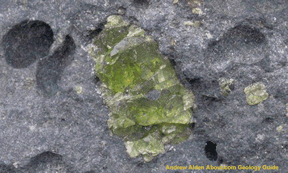
Olivine looks like little green crystals. It is typically found in some igneous and metamorphic rocks. Often the crystals are so small that you need to use your hand lens or magnifying glass to see them
...more


















